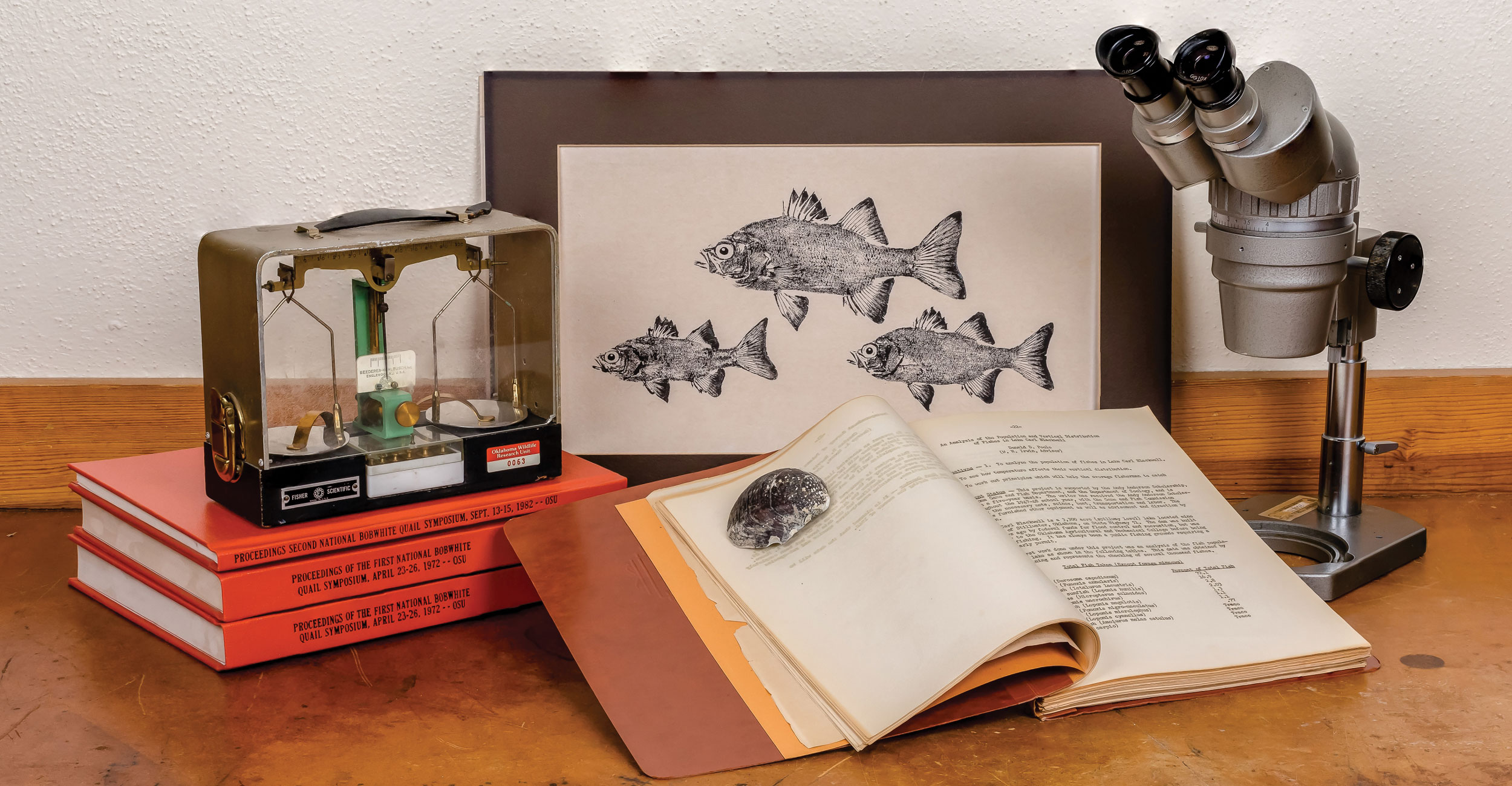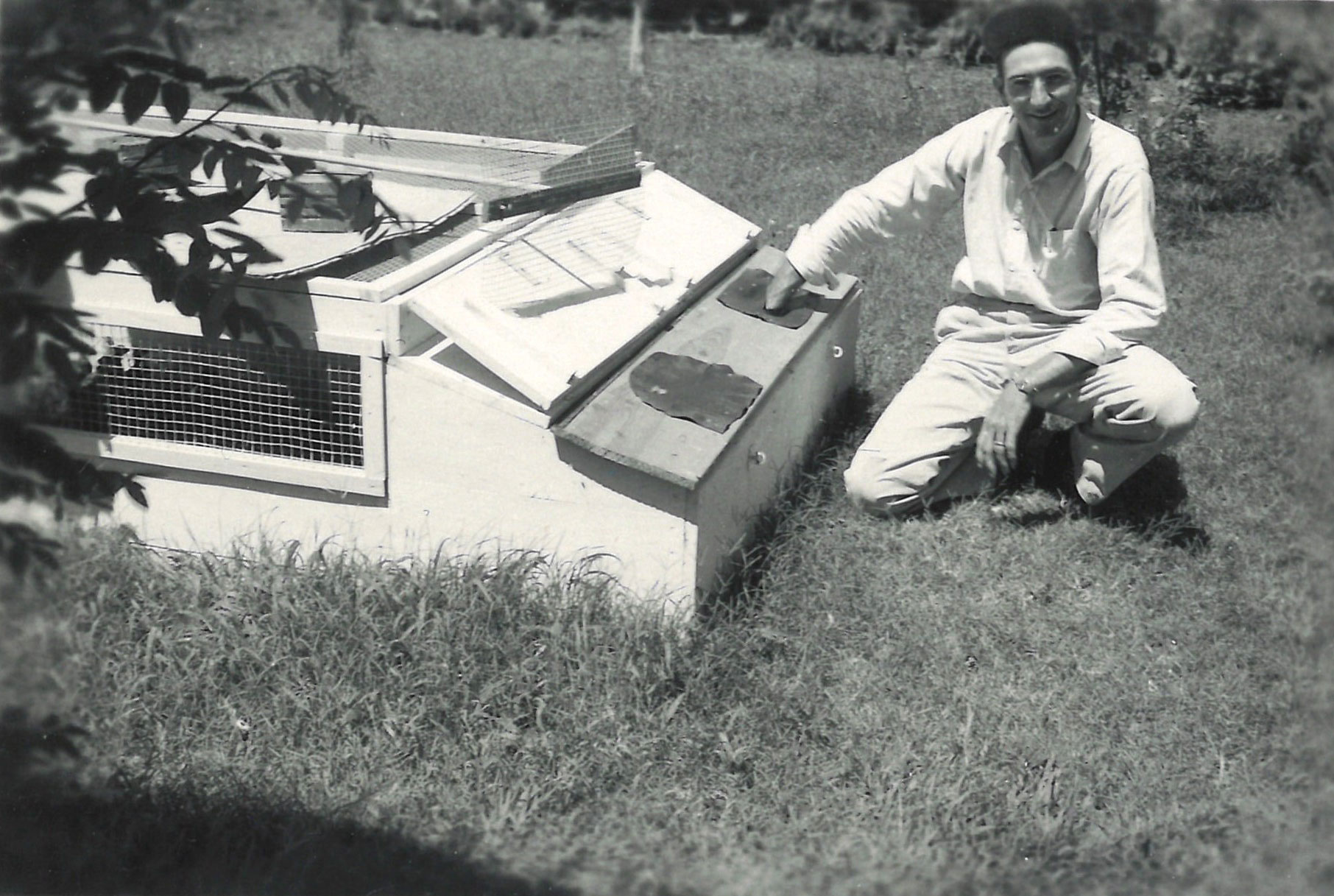
OSU Fish and Wildlife Research Unit celebrates 75 years
Tuesday, September 5, 2023
Media Contact: Mack Burke | Associate Director of Media Relations | 405-744-5540 | editor@okstate.edu
Throughout Oklahoma’s vast array of wilderness and waterways, a dedicated group of people works to ensure they’re always teeming with wildlife.
Many of those stewards come from Oklahoma State University’s Fish and Wildlife Research Unit, which marks a significant milestone in 2023 as it commemorates 75 years of fish and wildlife research in the state.
J.D. Strong, director of the Oklahoma Department of Wildlife Conservation, said the unit’s impact on preservation makes it a remarkable achievement in today’s rapidly changing landscape.

“It shows the long-term commitment that all of the partners in the program have had to advance our knowledge of fish and wildlife,” Strong said. “It shows the issues and concerns on the landscape and developing solutions and management options for addressing those fish and wildlife issues.”
The research unit has encountered various challenges over the decades, but the unit has recently garnered political backing, with U.S Congressman Tom Cole, a member of the House Appropriations Committee, advocating for its support.
“We’ve seen questions at the congressional level about whether or not to continue to fund and support the units,” Strong said. “Today, we’ve got strong support.”
Since its establishment in 1948, the OSU Fish and Wildlife Research Unit has contributed to the field by expanding the understanding of fish and wildlife issues and formulating effective management strategies. The unit’s collaborative endeavors with the ODWC and the U.S. Geological Survey serve as notable examples of partnerships that have facilitated research and advanced graduate education in the field.
The unit’s graduates have become leaders in state and federal agencies, making significant contributions to wildlife conservation. Their education, which combines scientific training with practical field experience, has prepared them to address the complex challenges facing Oklahoma’s diverse ecosystems.
Dr. Tom Coon, former vice president, dean and director of Agricultural Sciences and Natural Resources, said the unit provides a tremendous lift for the ODWC.
“We’re doing the research they need in order to be good stewards of our game resources,” Coon said. “We’re also preparing their workforce. If you look up and down the Department of Wildlife Conservation, the leadership and professional staff, many of them graduated from our program here.”
Under the leadership of Dr. Jim Long and his team, the research unit operates at full capacity, enabling the pursuit of diverse projects encompassing the study of spotted skunks, pronghorn, bears, as well as aquatic life subjects, like freshwater mussels and smallmouth bass genetics.
While the unit’s focus has shifted over time, its dedication to research and education remains front and center. Originally established to regulate harvests and revive declining species, such as whitetail deer and wild turkey, the unit now focuses on addressing the needs of threatened and endangered species. This shift reflects the changing landscape of conservation efforts and the ongoing commitment to preserving biodiversity.
“The evolution of the program is now more on conservation concerns,” Long said. “The problems facing nonharvested animals are widespread.”
The research unit’s success can be measured not only in its extensive research portfolio but also in the number of graduate students it has supported. Since its inception, the unit has helped over 400 students obtain master’s and Ph.D. degrees, preparing them for leadership roles in conservation and resource management.
“Our students who work with us now are directly plugged into several different areas that allow them later on to get a job,” Long said. “When our students come in, they’re automatically getting some of the best science on the ground, with some of the most innovative and up-to-date technologies available, and later on are able to get a job through that.”
Through its collaborations with the ODWC, the unit has conducted valuable research and provided graduate education opportunities.
The unit’s work has helped advance the understanding of key issues and develop effective management strategies.
With a steadfast commitment to scientific inquiry and partnership, the research unit continues to make contributions to the preservation and conservation of Oklahoma’s natural resources.
“We’re more relevant now than we ever were,” Long said.
Photos by: Tanner Scholten Photography and W. Taylor
Story by: Mak Vandruff | STATE Magazine
